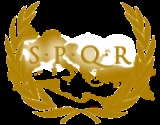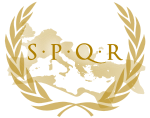
3rd century in Roman Britain
Encyclopedia
 3rd century in Roman Britain: 3rd century in Roman Britain:  |
| Other centuries |
| 2nd century 2nd century in Roman Britain Events from the 2nd century in Roman Britain.-Events:* 118** Governor Quintus Pompeius Falco suppresses a revolt by the Brigantes.* c... | 3rd century | 4th century |
Events from the 3rd century in Roman Britain
Roman Britain
Roman Britain was the part of the island of Great Britain controlled by the Roman Empire from AD 43 until ca. AD 410.The Romans referred to the imperial province as Britannia, which eventually comprised all of the island of Great Britain south of the fluid frontier with Caledonia...
.
Events
- 206
- Governor Lucius Alfenus SenecioLucius Alfenus SenecioLucius Alfenus Senecio was a Roman figure of the late 2nd - early 3rd centuries.-Career:Born in Curculum, now Djemila, in Africa, Lucius Alfenus Senecio was a Romanized North African. He served as consul and as governor of Syria in 200. Between c...
repairs Hadrian's WallHadrian's WallHadrian's Wall was a defensive fortification in Roman Britain. Begun in AD 122, during the rule of emperor Hadrian, it was the first of two fortifications built across Great Britain, the second being the Antonine Wall, lesser known of the two because its physical remains are less evident today.The...
and appeals for help from the Emperor against the northern tribes.
- Governor Lucius Alfenus Senecio
- 208
- Emperor Septimius SeverusSeptimius SeverusSeptimius Severus , also known as Severus, was Roman Emperor from 193 to 211. Severus was born in Leptis Magna in the province of Africa. As a young man he advanced through the customary succession of offices under the reigns of Marcus Aurelius and Commodus. Severus seized power after the death of...
and his son CaracallaCaracallaCaracalla , was Roman emperor from 198 to 217. The eldest son of Septimius Severus, he ruled jointly with his younger brother Geta until he murdered the latter in 211...
take personal command of the army in Britain.
- Emperor Septimius Severus
- 209
- Severus and Caracalla lead an expedition against the Caledonii, and build forts at CramondCramondCramond is a seaside village now part of suburban Edinburgh, Scotland, located in the north-west corner of the city at the mouth of the River Almond where it enters the Firth of Forth....
and the TayRiver TayThe River Tay is the longest river in Scotland and the seventh-longest in the United Kingdom. The Tay originates in western Scotland on the slopes of Ben Lui , then flows easterly across the Highlands, through Loch Dochhart, Loch Lubhair and Loch Tay, then continues east through Strathtay , in...
estuary.
- Severus and Caracalla lead an expedition against the Caledonii, and build forts at Cramond
- 210
- Caracalla leads an expedition against the rebellious MaeataeMaeataeThe Maeatae were a confederation of tribes who lived probably beyond the Antonine Wall in Roman Britain. The historical sources are vague as to the exact region they inhabited....
tribe.
- Caracalla leads an expedition against the rebellious Maeatae
- 211
- 4 February - Severus dies at York, while preparing another expedition against the northern rebels.
- Caracalla, now Emperor, abandons territory north of Hadrian's Wall, and returns to Rome.
- c. 214
- Britain divided into two provinces, Britannia SuperiorBritannia SuperiorBritannia Superior was one of the provinces of Roman Britain created around 197 AD by Emperor Septimus Severus immediately after winning a civil war against Clodius Albinus, a war fought to determine who would be the next emperor. Albinus was the governor of Britannia during that civil war...
and Britannia InferiorBritannia InferiorBritannia Inferior was a subdivision of the Roman province of Britannia established c. 214 by the emperor Caracalla, son of Septimius Severus. Located in modern northern England, the region was governed from the city of Eboracum by a praetorian legate in command of a single legion stationed in...
, with administrative centres at London and York respectively.
- Britain divided into two provinces, Britannia Superior
- c. 220
- SaxonsSaxonsThe Saxons were a confederation of Germanic tribes originating on the North German plain. The Saxons earliest known area of settlement is Northern Albingia, an area approximately that of modern Holstein...
raid south-east coast; forts built at ReculverReculverReculver is a hamlet and coastal resort situated about east of Herne Bay in southeast England. It is a ward of the City of Canterbury district in the county of Kent. Reculver once occupied a strategic location at the western end of the Wantsum Channel, between the Isle of Thanet and the Kent...
and BrancasterBrancasterBrancaster is a village and civil parish on the north coast of the English county of Norfolk. The civil parish of Brancaster comprises Brancaster itself, together with Brancaster Staithe and Burnham Deepdale...
.
- Saxons
- 255
- Work begins on a riverside wall in London.
- 259
- Rebel leader Latinus PostumusPostumusMarcus Cassianius Latinius Postumus was a Roman emperor of Batavian origin. He usurped power from Gallienus in 260 and formed the so-called Gallic Empire...
proclaims Britain as part of his "Empire of the GaulsGallic EmpireThe Gallic Empire is the modern name for a breakaway realm that existed from 260 to 274. It originated during the Roman Empire's Crisis of the Third Century....
".
- Rebel leader Latinus Postumus
- 270
- Construction of forts along the Saxon ShoreSaxon ShoreSaxon Shore could refer to one of the following:* Saxon Shore, a military command of the Late Roman Empire, encompassing southern Britain and the coasts of northern France...
begins in response to increased raiding.
- Construction of forts along the Saxon Shore
- 273
- Stone walls built around St AlbansSt AlbansSt Albans is a city in southern Hertfordshire, England, around north of central London, which forms the main urban area of the City and District of St Albans. It is a historic market town, and is now a sought-after dormitory town within the London commuter belt...
.
- Stone walls built around St Albans
- 274
- Postumus' Gallic Empire is reabsorbed into the Roman Empire under AurelianAurelianAurelian , was Roman Emperor from 270 to 275. During his reign, he defeated the Alamanni after a devastating war. He also defeated the Goths, Vandals, Juthungi, Sarmatians, and Carpi. Aurelian restored the Empire's eastern provinces after his conquest of the Palmyrene Empire in 273. The following...
.
- Postumus' Gallic Empire is reabsorbed into the Roman Empire under Aurelian
- 277
- Imperial edict lifts restrictions on British wineWineWine is an alcoholic beverage, made of fermented fruit juice, usually from grapes. The natural chemical balance of grapes lets them ferment without the addition of sugars, acids, enzymes, or other nutrients. Grape wine is produced by fermenting crushed grapes using various types of yeast. Yeast...
production. - General VictorinusVictorinusMarcus Piavonius Victorinus was emperor of the secessionist Gallic Empire from 269 to 271, following the brief reign of Marius. He was murdered by a jealous husband whose wife he tried to seduce.-Reign:...
puts down revolt, and settles BurgundianBurgundiansThe Burgundians were an East Germanic tribe which may have emigrated from mainland Scandinavia to the island of Bornholm, whose old form in Old Norse still was Burgundarholmr , and from there to mainland Europe...
and Vandal prisoners in Britain.
- Imperial edict lifts restrictions on British wine
- 287
- Mausaeus CarausiusCarausiusMarcus Aurelius Mausaeus Valerius Carausius was a military commander of the Roman Empire in the 3rd century. He was a Menapian from Belgic Gaul, who usurped power in 286, declaring himself emperor in Britain and northern Gaul. He did this only 13 years after the Gallic Empire of the Batavian...
takes power in Britain and proclaims himself Emperor.
- Mausaeus Carausius
- 289
- Carausius defeats Emperor MaximianMaximianMaximian was Roman Emperor from 286 to 305. He was Caesar from 285 to 286, then Augustus from 286 to 305. He shared the latter title with his co-emperor and superior, Diocletian, whose political brain complemented Maximian's military brawn. Maximian established his residence at Trier but spent...
in a naval battle.
- Carausius defeats Emperor Maximian
- 293
- Finance minister AllectusAllectusAllectus was a Roman usurper-emperor in Britain and northern Gaul from 293 to 296.-History:Allectus was treasurer to Carausius, a Menapian officer in the Roman navy who had seized power in Britain and northern Gaul in 286...
murders Carausius and seizes power; employs FrankishFranksThe Franks were a confederation of Germanic tribes first attested in the third century AD as living north and east of the Lower Rhine River. From the third to fifth centuries some Franks raided Roman territory while other Franks joined the Roman troops in Gaul. Only the Salian Franks formed a...
mercenaries.
- Finance minister Allectus
- 296
- Julius ConstantiusJulius ConstantiusJulius Constantius was a politician of the Roman Empire and a member of the Constantinian dynasty, being a son of emperor Constantius Chlorus and his second wife Flavia Maximiana Theodora, a younger half-brother of emperor Constantine I and the father of emperor Julian.- Biography :Julius...
defeats Britons near SilchesterSilchesterSilchester is a village and civil parish about north of Basingstoke in Hampshire. It is adjacent to the county boundary with Berkshire and about south-west of Reading....
, killing Allectus; prevents retreating Franks from sacking London.
- Julius Constantius
- 297
- Re-building of forts near Hadrian's Wall begins.
- Constantius returns to GaulGaulGaul was a region of Western Europe during the Iron Age and Roman era, encompassing present day France, Luxembourg and Belgium, most of Switzerland, the western part of Northern Italy, as well as the parts of the Netherlands and Germany on the left bank of the Rhine. The Gauls were the speakers of...
. - First mention on record of the PictsPictsThe Picts were a group of Late Iron Age and Early Mediaeval people living in what is now eastern and northern Scotland. There is an association with the distribution of brochs, place names beginning 'Pit-', for instance Pitlochry, and Pictish stones. They are recorded from before the Roman conquest...
attacking from the north in Eumenius' Panegyrici Latini.

